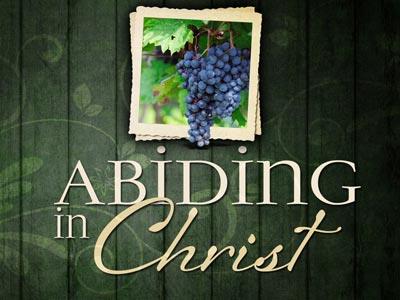-
The Old Testament Background For Jesus' Teachings About Discipleship (Discipleship Intro)
Contributed by Ed Vasicek on Jan 8, 2025 (message contributor)
Summary: Understanding the relationship of rabbi to disciple – and what discipleship entailed – will help us to better understand Jesus’ teachings because they help us better understand the teacher (Jesus) and His most frequent audience (the disciples).
The Old Testament Background for Jesus' Teachings About Discipleship
I Kings 19:19-21,Luke 9:57-62, Matthew 19:21, and Luke 5:27
Intro
A lot of ignorance about discipleship primarily because interpreters isolate the New Testament teaching from its Old Testament context.
Main Idea: Understanding the relationship of rabbi to disciple – and what discipleship entailed – will help us to better understand Jesus’ teachings because they help us better understand the teacher (Jesus) and His most frequent audience (the disciples).
I. Discipleship in Jesus' Day
A. Leaving ones work for a time to follow a rabbi was the norm among the devout in Israel.
Surprisingly, there was nothing mysterious about men leaving their businesses and families for days, weeks, or months to journey with a rabbi who roamed the countryside, teaching. Yeshua was one of hundreds of first-century rabbis who roamed the countryside, each with his band of disciples. The Jewish society nurtured and celebrated discipleship.
A sage who lived a century before Jesus is reported to say, "Let your home be a meeting house for the sages, and cover yourself with the dust of their feet, and drink in their words thirstily."
According to David Bivin, Jewish men were encouraged to invest a part of their lives following a sage. They would usually travel with him intermittently. The ancient rabbis held secular vocations and did not draw a salary, unlike their modern counterparts. A married man could not leave home to follow a rabbi for more than thirty days without his wife’s permission. Amazingly, a disciple was expected to honor his rabbi above his own parents.
Lois Tverberg writes:
Regarding fees – it was forbidden to charge a fee to teach the Torah, so it was common for rabbis to practice a trade part of the time and teach part of the time. Disciples did the same. Some rabbis were from priestly families, so they would have a stipend from the Temple, but many were manual laborers. There are many reports of teaching sessions held in the evening or on the Sabbath or festival days, so often men worked and studied at the same time. Some could work seasonally and take time off between planting and harvesting, etc. This makes sense with how the Gospel accounts describe the disciples fishing occasionally, even after they had become disciples of Jesus.
B. Missionary zeal of disciples
The Pharisees identifying with the School of Hillel were known for their missionary zeal, perhaps priming someone like Paul. Paul, you remember, was trained by the leading figure of Hillel’s School, Gamaliel, who was also Hillel’s grandson.
Disciples often studied under several sages. Brad Young comments:
Because a disciple should have broad knowledge, he would usually study with one rabbi for a number of years and then go study under another sage. The master teacher was a mentor whose purpose was to raise up disciples who would not only memorize his teachings but also live out the teachings in practical ways…The disciple walks with God by living out in practice the teaching of his rabbi.
C. Disciples were serious about memorizing.
Disciples would bond with fellow disciples, and make friends (haverim). A haver is, "A student who partners with another in study to discuss a religious text and aid each other in learning. Memorizing a rabbi's teaching was central to discipleship. The Greek equivalent of this term was seemingly used to describe Jesus’ followers in the early church (see 3 John 1:15).
Jesus said, "Remember the word that I said to you…" (John 15:20a). This, in a nutshell, was the obsession of every true disciple.
II. The Rabbis Viewed the Dynamic Between Elijah and Elisha As a Model for Discipleship; So Likely Did Jesus.
The Rabbis viewed the dynamic between Elijah to Elisha as a model for the rabbi-disciple relationship, as Spangler and Tverberg note.
A. Jesus’ Probable Midrash (NT Elaboration on an OT Text) from I Kings 19:19-21
These texts are obviously correlated: I Kings 19:19-21,Luke 9:57-62, Matthew 19:21, and Luke 5:27, quoted from the New King James Version:
I Kings 19:19-21
So he departed from there, and found Elisha the son of Shaphat, who was plowing with twelve yoke of oxen before him, and he was with the twelfth. Then Elijah passed by him and threw his mantle on him. And he left the oxen and ran after Elijah, and said, “Please let me kiss my father and my mother, and then I will follow you.”
And he said to him, “Go back again, for what have I done to you?”
So Elisha turned back from him, and took a yoke of oxen and slaughtered them and boiled their flesh, using the oxen’s equipment, and gave it to the people, and they ate. Then he arose and followed Elijah, and became his servant.
Luke 9:57-62:
Now it happened as they journeyed on the road, that someone said to Him, “Lord, I will follow You wherever You go.” And Jesus said to him, “Foxes have holes and birds of the air have nests, but the Son of Man has nowhere to lay His head.”

 Sermon Central
Sermon Central



